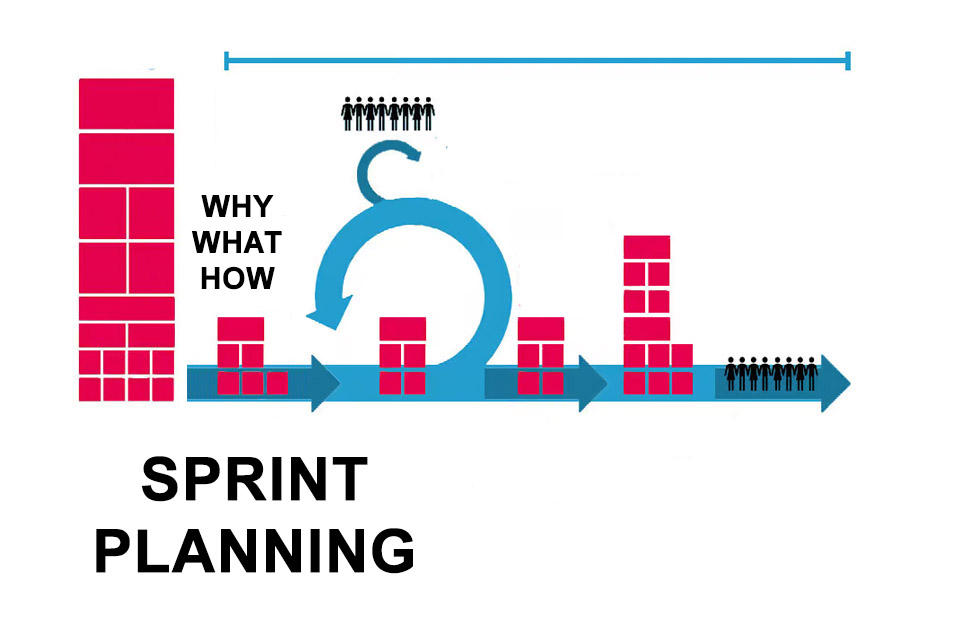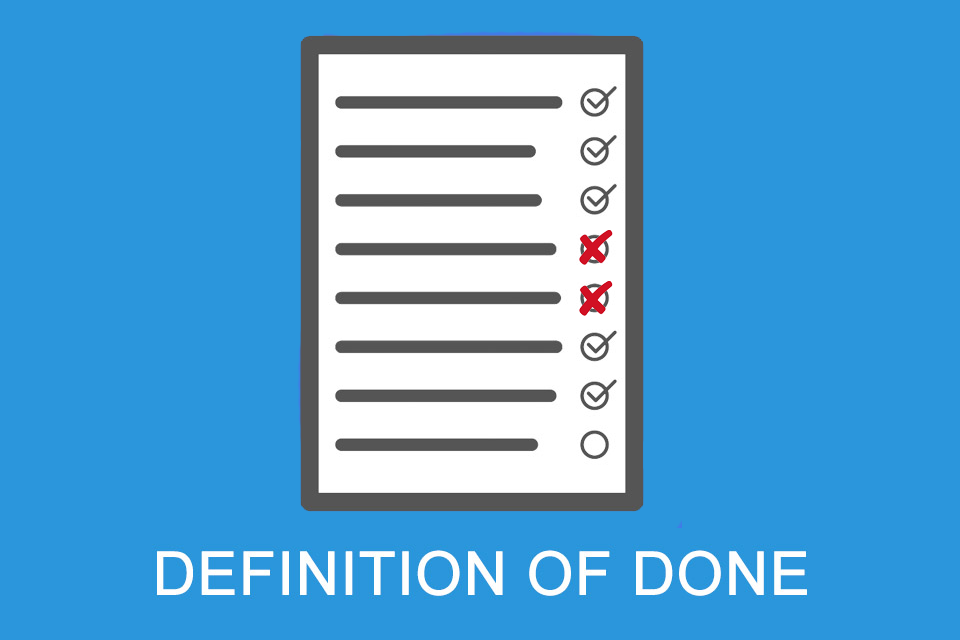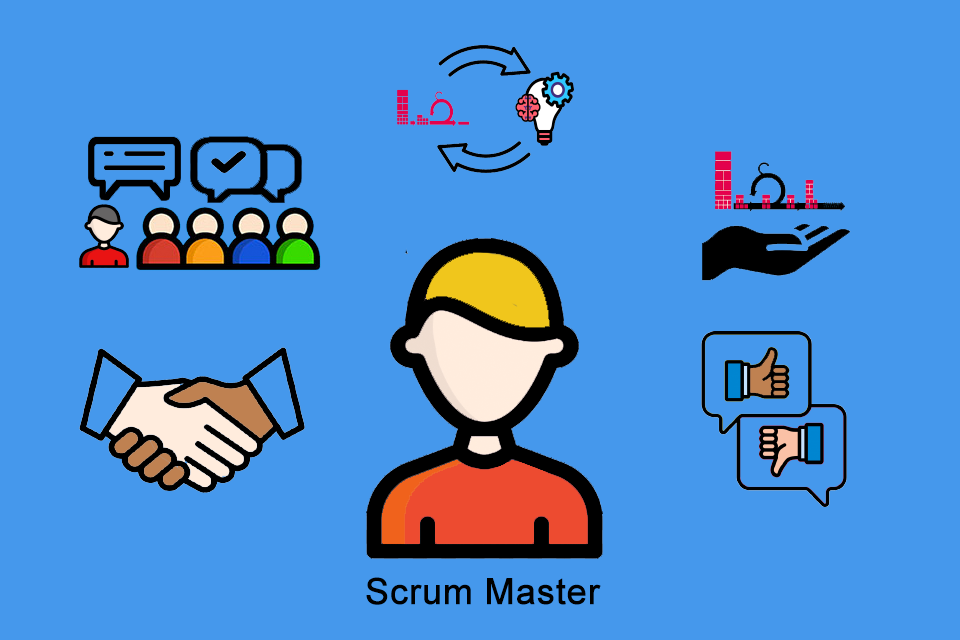What is an Increment?
Table of Contents: Definition – Increment Scrum – Increment LeSS – Incremental V-Modell XT – Incremental FDD – Questions from the field – Notes
Smartpedia: An increment is a potentially deliverable result of a Scrum Sprint or a functional increase in incremental software development.
Increment – the gradual expansion of the scope of delivery
The term “increment” comes from Latin and means “to enlarge” or “increase”. Applied to incremental software development, this means that a system is planned as a whole but realised in parts. The scope and/or number of functions grows per increment.
The concept of increments can be found in several process models, methods and frameworks such as Scrum, Extreme Programming, Scaled Agile Framework (SAFe), Large-Scale Scrum (LeSS), Feature-Driven Development (FDD) or the V-Model XT.
The Scrum Increment
There are increments in agile software, product and service development; in Scrum, for example, an Increment is the expected, potentially deliverable result of a sprint. The Scrum Guide defines an increment as “a concrete stepping stone toward the product goal. Each increment is additive to all priors and thoroughly verified, ensuring that all Increments work together. In order to provide value, it must be usable”.
The scope of the increment is defined by the sprint backlog to which the developers commit themselves in the sprint planning. To release an increment, the definition of done must be checked. Potentially deliverable means that the software – as defined – works and could be delivered to customers or users.
In practice, however, not every increment of a sprint is delivered. Releases, i.e. the results of several sprints, are usually made available to customers and marketed and distributed accordingly by marketing and sales.
The increment in Large-Scale Scrum (LeSS)
Large-Scale Scrum (LeSS) is a framework for scaling Scrum to multiple teams working together on a product. Within LeSS, the increment is defined similarly to traditional Scrum, but with some additional aspects that are relevant for scaling.
As several teams work on a product, each team contributes to the creation of a joint increment. This promotes collaboration and shared responsibility for the product.
The need for an integrated increment at the end of each sprint emphasises the importance of continuous integration and collaboration between teams. This means that all teams must regularly bring their work together to ensure that it is compatible and functional.
A potentially shippable increment allows product management and stakeholders to regularly review progress and make informed decisions based on the actual results.
Incremental system development in V-Modell XT
The V-Modell XT as a German standard for the planning and implementation of system development projects, which is used in companies, authorities and in the military sector, defines an incremental system development. This addresses not only new developments, but also the advancement and migration of old systems. It can be used if the requirements for the system to be created / further developed are relatively stable and the technological risks are low. The use of finished products is then also possible.
Incremental feature development with FDD
In Feature-Driven Development (FDD), development is divided into smaller, iterative steps that focus on the implementation of features. These features are independent, functional parts of the system that are developed step by step. Each feature can be viewed as an increment that is added or improved during a development cycle. FDD emphasises the continuous delivery of working software, and the finished features represent the increments that add value for the customer.
Questions from the field
Here you will find some questions and answers from the field:
How many increments are there per Scrum Sprint?
In Scrum, there is no fixed number of increments per sprint. A sprint is a fixed time interval, typically between one and four weeks, in which a functional product increment is created. This means that at the end of each sprint, there should be at least one increment that is potentially deliverable and offers added value for the customer.
The number of increments within a sprint depends, among other things, on the complexity of the tasks, the team size and the skills of the employees. The exact number can therefore vary.
What role does commitment in Scrum play for increment?
The current Scrum Guide emphasises the importance of commitments as part of the artefacts, with the aim of increasing transparency, improving focus and making progress measurable. Specifically broken down into the individual Scrum artefacts, there are three direct assignments:
- For the product backlog, it is the product goal. Product goals are qualitative objectives of product development, i.e. they determine the type and quality of products, among other things.
- For the sprint backlog, it is the sprint goal. A sprint goal describes the Scrum team’s vision for a sprint. It defines the purpose of the sprint and is the basis for the selection of backlog items.
- For the increment, it is the definition of done. The definition of done is a checklist with quality criteria that specifies which tasks are to be completed for backlog items.
Here you can find more details on commitment in Scrum.
Why do increments increase transparency?
Imagine you develop a product over several years and only deliver the finished result when you believe it is exactly as it was formulated years earlier in the customer specification. How likely is it that you will really meet the expectations of the stakeholders?
Increments are an effective way of clearly measuring the progress of a project. Each increment represents a completed and potentially deliverable unit, making it easy for teams and stakeholders to track progress. This creates a transparent representation of development progress.
A major advantage of the regular delivery of increments is the early feedback. Stakeholders and customers gain an insight into the development process and can check the development stage, provide feedback and suggest changes. This enables the team to adapt to new requirements at an early stage and ensure that the end product meets expectations.
Another advantage is risk minimisation. Through incremental development and regular testing, potential problems or challenges can be recognised early and resolved before they become major issues.
In addition, increments promote communication and collaboration within the team. As the team regularly delivers working parts of the product, team members must work closely together to ensure that increments are completed on time and with high quality.
Overall, the regular delivery of increments increases transparency over the development process. It provides a clear insight into progress, requirements, risk and prioritisation. This allows teams and stakeholders to make better informed decisions and maximise the success of the project.
When is the increment delivered in Scrum?
You often read and hear the statement that an increment is delivered at the end of the sprint after the joint exchange in the sprint review. And indeed, the sprint review is a good opportunity to inspect the increment and gather feedback. However, the sprint review should not be seen as a barrier to delivering value. Accordingly, the Scrum Guide emphasises that an increment can be delivered at any time as soon as it is ready and meets the definition of done.
The statement that the increment is delivered at the end of each sprint is therefore not entirely correct. Rather, it can be delivered at any time, even during a sprint.
Is there a difference between increment and product increment?
The terms increment and product increment are actually used synonymously. However, there can be a small but subtle difference in practice:
‘Product Increment’ is a very specific term that refers directly to the progress of a product within a particular sprint in Scrum. ‘Increment’, on the other hand, can be used more generally to describe any incremental progress in a project.
In LeSS and other scaled frameworks, the more general ‘increment’ is also often used to emphasise the integration and collaboration between multiple teams.
How can companies really ensure that each increment delivers real added value for their customers?
Notes:
In addition to software development, the term is also used in economics as a fixed, minimum increase of bids in auctions, in plotting as a fixed stride of the drawing head and in chess as a time bonus per move. In computer science, increments and decrements correspond to operators that lead to increases and decreases in value through individual commands; in addition, a distinction is made here between pre- and post-increments.
There is also the so-called auto increment. It refers to a function in the context of databases that allows a field (usually a primary key) to be automatically assigned a unique value when a new record is inserted. This feature is useful to ensure that each record has a unique identifier without the user having to manually enter a value.
Here you can find a German video about iterative and incremental software development.
If you like the article or would like to discuss it, please feel free to share it in your network. And if you have any comments, please do not hesitate to send us a message.
And here you will find additional information from our Smartpedia section:



